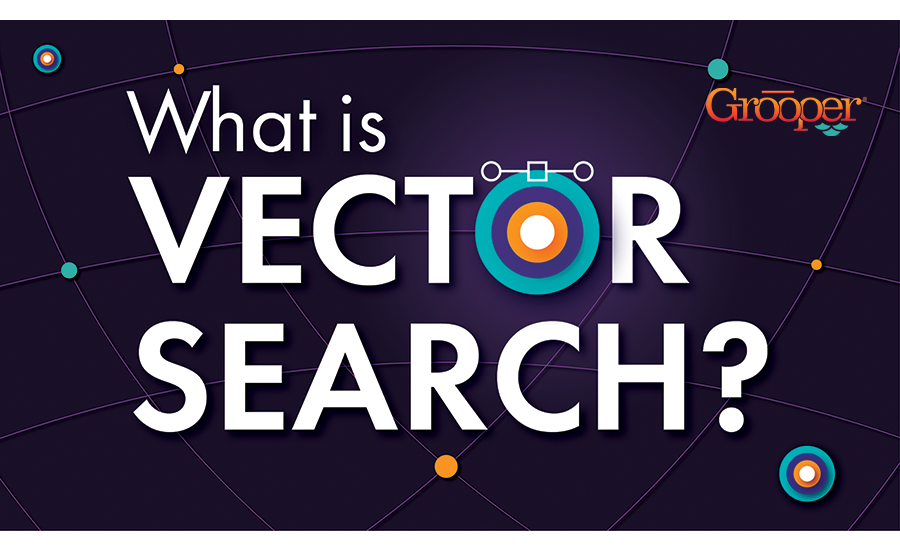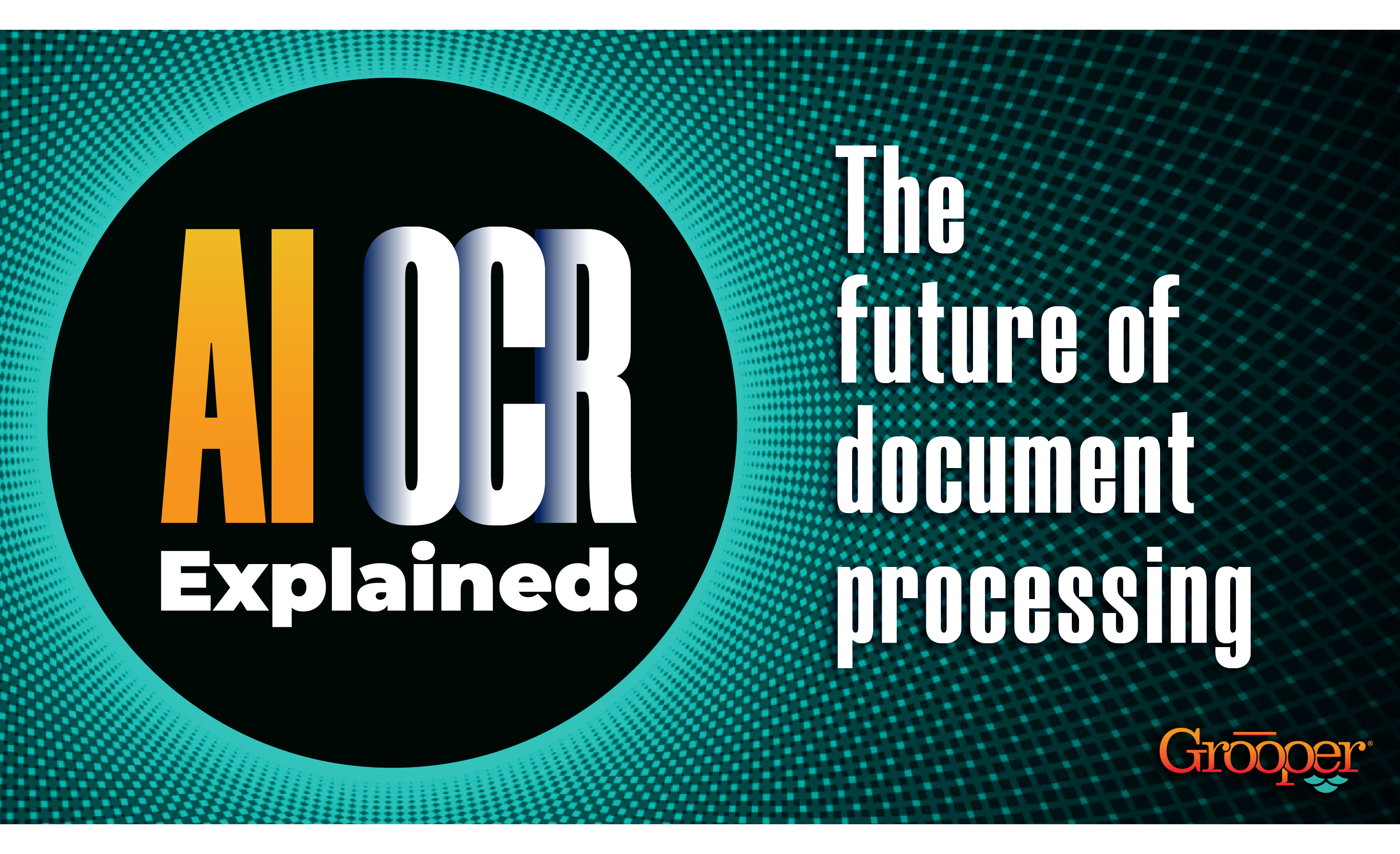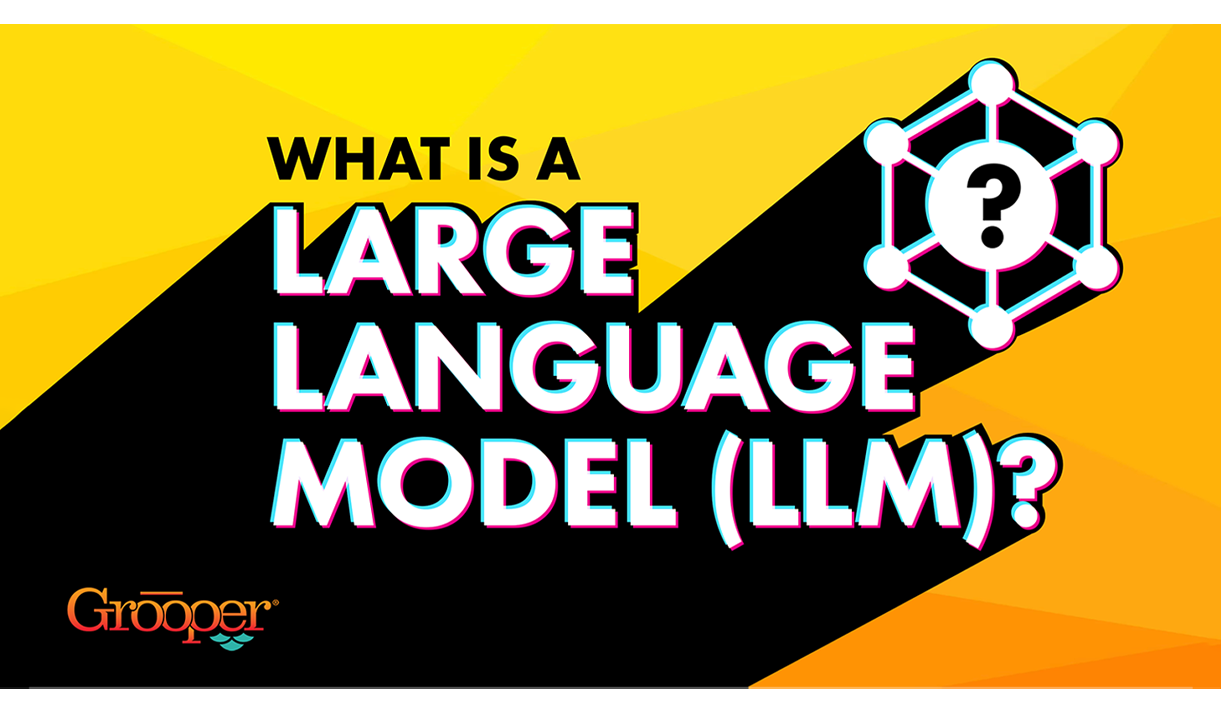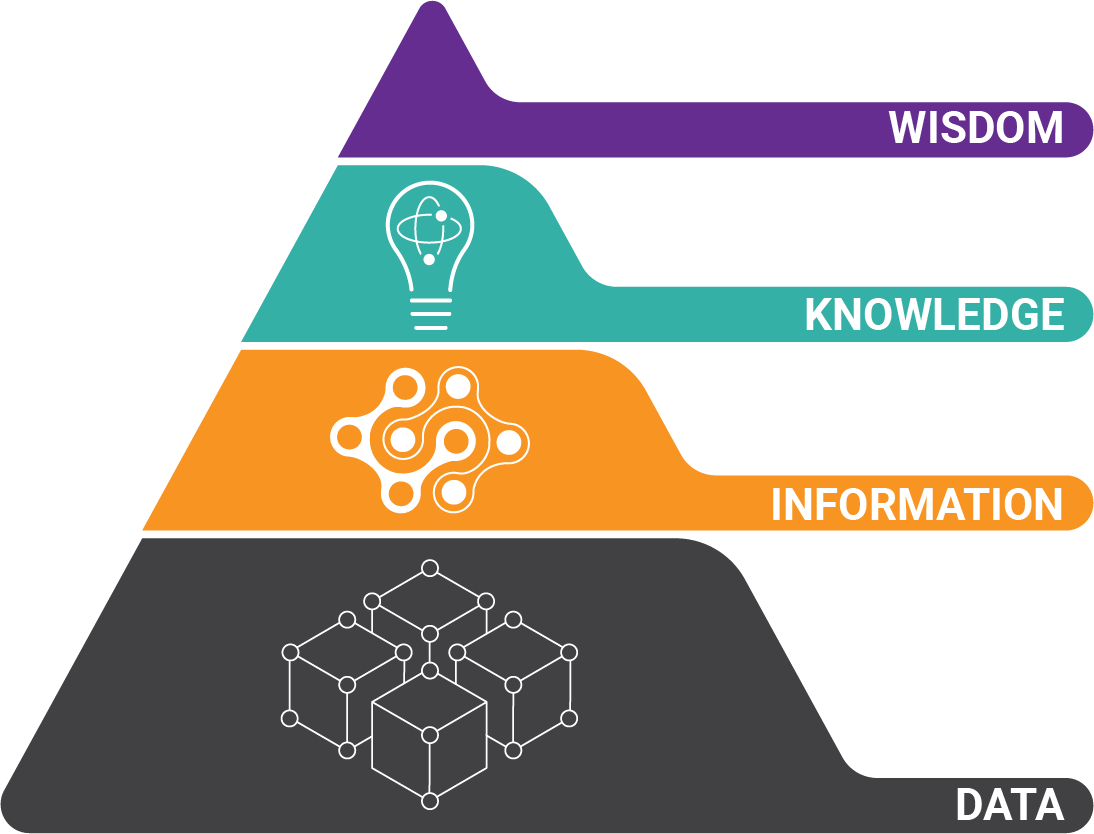Have you ever wondered how Netflix recommends your next favorite show or how Google seems to know exactly what you’re searching for? These everyday conveniences are powered by a clever technology called vector search.
This guide will break it down in simple terms, so you can understand how it works and why it’s important.
Table of Contents
- What is vector search?
- White paper: How anyone can use AI
- Why is vector search important?
- Vector search vs traditional search
- Get started with Grooper's vector search
- 5 Use cases of vector search
- How does vector search work?
- Benefits of vector search
What is Vector Search?
 Vector search is a search technique used to find similar items in a data set. It's a powerful tool used in information retrieval and machine learning to power a variety of artificial intelligence applications.
Vector search is a search technique used to find similar items in a data set. It's a powerful tool used in information retrieval and machine learning to power a variety of artificial intelligence applications.
Unlike traditional keyword-based search that relies on exact matches, vector search understands the meaning behind your query, leading to much better search results.
Vector search is based on vector representations of data. These representations, also known as vector embeddings, are numeric representations of data points.
Think of vector search like this: instead of just storing words, documents, images, or videos as raw data, these things are converted into a string of numbers that capture their key characteristics.
These numbers represent the semantic relationships between different pieces of information. For example, the vector for "king" might be closer to the vector for "queen" than it is to the vector for "apple," reflecting their semantic relationship.
This numeric representation lets machine learning models understand and compare the data. When you make a vector search, the system converts your query into a vector embedding also.
It then uses algorithms like nearest neighbor search to find the data points in the dataset with the closest vector embeddings. The closer the vectors, the more semantically similar the items are. This means vector search can find items that are related in meaning, even if they don't share the same keywords.
Vector search is used in data retrieval and machine learning for many uses, like semantic search, recommendation systems, and image recognition. Because it focuses on meaning, vector search is a very important part of modern intelligent search experiences.
Get Our Free White Paper: How Any Organization Can Use AI

Transform your organization's data into actionable intelligence! This white paper shows you how to unify all your data sources to leverage AI-powered search, unlocking hidden value, giving you a competitive edge.
Discover how to implement a data intelligence framework to deliver real-time insights and enhances operational at your organization! DOWNLOAD TODAY:
What is a Vector?
 Let’s start with the basics: what is a vector?
Let’s start with the basics: what is a vector?
Think back to your high school physics class. A vector is like an arrow that has two things: a size (called magnitude) and a direction. For example, gravity is a vector. It has a certain strength (the pull toward Earth) and points in a specific direction (toward the center of the Earth).
Now, when it comes to words and searching, a vector works similarly. Each word is turned into an arrow, but instead of just two traits (size and direction), a word gets thousands of traits!
These traits represent the word’s meaning and how it relates to other words. Words that mean similar things end up near each other in something called “vector space.”
Why is Vector Search Important?
 Vector search is important because computers can’t see the way humans do. So we have to translate words into something that computers understand. And computers understand numbers.
Vector search is important because computers can’t see the way humans do. So we have to translate words into something that computers understand. And computers understand numbers.
Vector search is a huge improvement to information retrieval as it understands the meaning, not just your keywords. This difference enables the solution to find similar results to the concept you're looking for.
And vector search works very well with even huge amounts of data, such as millions or billions of documents.
This improvement of semantic understanding unlocks better, more relevant search experiences across many data types like text, images, and code. Ultimately, vector search empowers tools ranging from personalized recommendations to advanced AI (artificial intelligence) assistants, significantly improving how we find information.
How Are Vectors Created?
Here’s the interesting part: computers use a process called “embedding” to turn words into vectors. This process uses a special model (think of it like a very smart program) that understands how words relate to each other. For example:
- Words like “big” and “huge” would end up close together because they mean similar things.
- The computer can even do math with words. If you take the vector for “biggest,” subtract “big,” and add “small,” you’ll get a result close to “smallest.”
Pretty awesome, right?
Vector Search vs Traditional Search
 Traditional search methods, like keyword search, rely on exact matches. A search for "dog" usually only returns results that containing that specific word. This method is good for finding precise matches but can miss related information.
Traditional search methods, like keyword search, rely on exact matches. A search for "dog" usually only returns results that containing that specific word. This method is good for finding precise matches but can miss related information.
By contrast, vector search focuses on meaning instead of just matching words. It represents data and queries as vector embeddings, which are numerical representations of their semantic content. These embeddings are points in a high-dimensional space, where proximity indicates semantic similarity.
Therefore, a vector search for "dog" might also retrieve results for "pet," "animal," or "puppy" because these words are close to "dog" in vector space. This allows vector search to uncover related information even if you don't use exact words.
Think of a librarian who understands the underlying meaning of your query and can suggest other relevant resources beyond just those containing your specific words. Essentially, vector search captures the semantic relationship between concepts, enabling it to find results that are conceptually similar, even if they lack lexical similarity.
This makes vector similarity search more powerful for discovering related content and understanding the intent behind a query.
Vector Search Use Cases
Vector search has a ton of uses or applications. Here are a few examples:
Recommendation Systems:
 Vector search powers recommendation systems, enhancing the user experience in various applications. By understanding user preferences, these systems can suggest similar items, whether products, movies, or other content.
Vector search powers recommendation systems, enhancing the user experience in various applications. By understanding user preferences, these systems can suggest similar items, whether products, movies, or other content.
Platforms like Netflix and Amazon use vector search to suggest things you might like based on what you’ve already watched or bought. This personalized approach improves user engagement and satisfaction.
Information Retrieval
 In this use case, vector search excels at retrieving relevant documents, web pages, or other content. By representing these items as vectors, the search engine can find semantic similarity to a user's query, even if the user's keywords aren't present in the content being searched.
In this use case, vector search excels at retrieving relevant documents, web pages, or other content. By representing these items as vectors, the search engine can find semantic similarity to a user's query, even if the user's keywords aren't present in the content being searched.
This allows for a more comprehensive and contextually aware search experience, going beyond simple keyword matching.
Multimodal Search
 Multimodal search allows people to search across different data content types (like images and text) within a unified vector space. By embedding both images and text into this common space, vector search enables queries that combine visual and textual elements.
Multimodal search allows people to search across different data content types (like images and text) within a unified vector space. By embedding both images and text into this common space, vector search enables queries that combine visual and textual elements.
So you can search for an image using text, search for text using an image, or even use a combination of both. This ability unlocks richer and more intuitive search experiences, going beyond traditional text-based or image-based search alone.
Document Searches
 Imagine being able to search through tons of documents and finding related topics, even if the exact words aren’t in your search. A great example of vector search for documents is Grooper.
Imagine being able to search through tons of documents and finding related topics, even if the exact words aren’t in your search. A great example of vector search for documents is Grooper.
Natural Language Processing (NLP)
In Natural Language Processing (NLP), vector search powers many different applications, from chatbots to sophisticated AI assistants. By representing text as vectors, these applications can understand the semantic meaning of language.
 This allows AI models to quickly retrieve semantically similar information, enabling more natural and conversational interactions. For example, a chatbot can use vector search to find relevant answers to user questions, even if the exact keywords aren't present. This allows these applications to understand the intent and context, going beyond simple keyword matching and creating a more nuanced and helpful user experience.
This allows AI models to quickly retrieve semantically similar information, enabling more natural and conversational interactions. For example, a chatbot can use vector search to find relevant answers to user questions, even if the exact keywords aren't present. This allows these applications to understand the intent and context, going beyond simple keyword matching and creating a more nuanced and helpful user experience.
Vector search is essential for NLP tasks like document clustering, topic modeling, and semantic search, allowing AI to process and understand language more effectively.
How Vector Search Works
At the core of vector search lies the concept of nearest neighbors. Data points (whether documents or images) are turned into vector embeddings, which are numerical representations that capture semantic meaning.
These vector embeddings are then indexed for efficient retrieval. When a a search query is submitted, it too is converted into a query of vector embeddings.
The search engine then uses algorithms, like k nearest neighbor algorithms (kNN), to find the data points with the most similar vector embeddings to the query vector. These similar vectors represent the most relevant results.

While kNN provides high accuracy, it can be computationally expensive, especially when executing efficiently in high dimensional spaces.
Therefore, many vector search implementations use approximate nearest neighbor (ANN) algorithms. These algorithms sacrifice perfect accuracy to significantly reduce the computational resources required and improve search speed.
This is a good trade off, especially when dealing with massive datasets, as the benefits of faster search outweigh the slight loss in precision. ANN algorithms enable efficient vector search at scale, making it practical for real-world uses.
ANN Algorithms
Approximate Nearest Neighbor (ANN) algorithms are crucial for efficient vector search in high-dimensional spaces. Traditional nearest neighbor algorithms, while accurate, can be computationally expensive. ANN algorithms significantly reduce this computational burden by sacrificing some accuracy.
This trade-off dramatically improves search efficiency, making it practical to find matches within massive datasets. ANN methods are essential for scaling vector search to handle real-world applications.
How Does Grooper Use Vector Search?
Grooper, our intelligent document processing platform, makes vector search easy to use. Here’s how vector search works with Grooper:
- Grooper turns documents into super-accurate text using AI-powered OCR (Optical Character Recognition).
- This text is then converted into vectors using the best embedding models available.
- Next, the vectors are stored in a database that can be searched quickly and easily.
- Users can then ask questions or efficiently search using natural language. Grooper finds the most relevant information, even if that data is filed in unexpected ways.
In addition, Grooper’s no-code platform means you don’t need to be a tech wizard to use it. Everything is set up to work smoothly without needing a large team of programmers.
Benefits of Vector Search with Grooper
 Vector search is being used in many industries as a powerful way to improve data retrieval and user experience. This method offers more precision than traditional keyword-based searches. Notably, Grooper's vector search takes this a step further by integrating seamlessly with unstructured data, allowing for a highly scalable and efficient data processing pipeline.
Vector search is being used in many industries as a powerful way to improve data retrieval and user experience. This method offers more precision than traditional keyword-based searches. Notably, Grooper's vector search takes this a step further by integrating seamlessly with unstructured data, allowing for a highly scalable and efficient data processing pipeline.
Grooper improves vector search by empowering companies to process and unify all their structured and unstructured data with comprehensive access and retrieval. An especially important feature is Grooper's ability to integrate with large language models (LLMs) and embedding technologies, enabling simple and context-aware search functionalities.
Here are several benefits of vector search:
- Efficient Query and Browsing: Grooper's vector search effectively processes many different data sources. This makes it great for environments where fast access to different data types is crucial.
- Better Personalization and Understanding: By leveraging advanced AI capabilities, Grooper provides personalized results with semantic understanding, ensuring that people get contextually relevant information.
- Greatly Reduced Repetitive, Manual Work: With Grooper, vector search is part of a broader data intelligence framework. This system automates repetitive tasks and enhances operational efficiency by reducing manual errors.
The implementation of vector search in Grooper improves retrieval accuracy and supports complex queries. The big benefit is tailored solutions that match specific business needs. As a result, Grooper's vector search can be a vital tool for companies looking to transform their data into actionable insights.
Challenges of Vector Search
 Of course no technology is perfect. While vector search has many great benefits, there are some drawbacks. Here are some challenges of using vector search that you should be aware of:
Of course no technology is perfect. While vector search has many great benefits, there are some drawbacks. Here are some challenges of using vector search that you should be aware of:
- Embedding Creation is Complicated: Generating high-quality vector embeddings requires significant effort and a strong foundation of knowledge. Setting up a vector search can be tricky without the right tools or expertise.
- Additional Database Requirements: Traditional databases often struggle with vector search, so specialized vector databases are needed.
- Computational Overhead: Vectorizing data can be computationally intensive, though techniques like inline vectorization and vector databases can help. This is because vector search needs lots of power. Creating and searching through vectors takes a lot of computer resources.
- Curse of Dimensionality: Search performance can be impacted by the "curse of dimensionality" in high-dimensional spaces.
- Routine Index Maintenance: Maintaining index efficiency through garbage collection is crucial.
- Ensuring High Vector Quality: Ensuring vector quality by using appropriate models for the data is essential.
- Scalability: It can be challenging to handle extremely large datasets and rapid data growth.
- Cold Start Problem: New items may lack sufficient data for accurate similarity calculations, leading to the "cold start problem."
Get Started with Grooper's Vector Search Solutions
 Vector search is changing the way we find and use information. By focusing on meaning and context, it helps people and organizations make better use of their data. Whether it’s helping you find the perfect show to watch or powering advanced chatbots, vector search is a technology that’s shaping the future.
Vector search is changing the way we find and use information. By focusing on meaning and context, it helps people and organizations make better use of their data. Whether it’s helping you find the perfect show to watch or powering advanced chatbots, vector search is a technology that’s shaping the future.
Want to learn more about how Grooper can bring the power of AI vector applications search to your fingertips? Read more about Grooper.
Contact us to get a demo of vector search with your documents!
About the Author: Tim McMullin
Tim McMullin brings extensive sales and solution design experience to help customers and partners successfully meet their business objectives.
With more than 25 years of technical and sales expertise in the enterprise document and data capture space, Tim is responsible for managing Grooper sales at BIS. His leadership focuses on the expansion of all things Grooper, especially the channel and traditionally underserved verticals.




